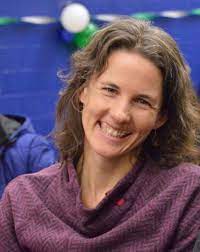Latest Winners
The Clio Prizes
Atlantic Region
Atlantic Provinces
 Andrea Procter. A Long Journey: Residential Schools in Labrador and Newfoundland. St John’s, NL: ISER Books, 2020.
Andrea Procter. A Long Journey: Residential Schools in Labrador and Newfoundland. St John’s, NL: ISER Books, 2020.
Andrea Procter’s remarkable book, A Long Journey: Residential Schools in Labrador and Newfoundland, and part of the province’s Healing and Commemoration project, is a model of engaged collaborative scholarship with the Inuit, NunatuKavut, and Innu nations of Labrador. Building on a longstanding cooperative relationship with Labradorians, Procter incorporates hundreds of hours of oral history, much of it collected by the project, and some from published accounts. She skillfully combined them with extensive archival research, particularly in the records of The International Grenfell Association, which administered three residential schools in St. Anthony, Cartwright, and North West River for the NunatuKavut, and in the records of the Moravian Church of Labrador, which administered residential schools in Makkovik and Nain for the Inuit. Her efforts yielded a book that captures diverse points of view and individual experiences of former students. Each residential school had its own history, particularly among the Moravians, who first built schools in northern Labrador in the eighteenth century.
Proctor’s commitment to listening to former students makes this book come alive with their individual voices as they tell of cruelty and kindness, work and fellowship. Dozens of photographs, many from Them Days Archive in Happy Valley-Goose Bay, convey the outsized role these educational institutions in Labrador. Procter’s efforts of inclusivity provide a respectful representation of her informants as children at the schools and as adults making sense of life defining experiences. The book’s extensive archival research in Labrador, Newfoundland, Canada and further afield draws out the differences between the Moravians and the Grenfell Association in their approach to education. The Innu, many who were Catholics or familiar with Catholicism, chose to send their children to the Mount Cashel Orphanage in St. John’s, or to the Grenfell-run school at North West Arm. Sensitive to Indigenous traditions of child raising, this book will give readers an appreciation of the challenges and resilience of these Inuit, Innu, and NunatuKavut as they were subjected to a more punitive philosophy of education. While specifically about residential schools in Labrador and Newfoundland, this book is also evocative depiction of the Indigenous peoples of the province, particularly in their homelands in Labrador, and deserves a wider readership for the stories it tells and the nuances it expresses. It can also serve as an example for others who are committed to respectful collaborations that enable Indigenous peoples, in this case with diverse cultural perspectives, to convey their understandings of their own lives in a way that models rigorous collaborative scholarship.
Québec
 Daniel Horner, Taking it to the Streets. Crowds, Politics and the Urban experience in Mid-Nineteenth Century Montreal. McGill-Queen’s University Press, 2020.
Daniel Horner, Taking it to the Streets. Crowds, Politics and the Urban experience in Mid-Nineteenth Century Montreal. McGill-Queen’s University Press, 2020.
Dan Horner’s book has merit in many ways. First, through his renewed approach to known and lesser-known archival sources, he shows us how these documents reflect the political sensibilities of the time. Second, by placing the street as a political and cultural space, he inserts into the very fabric of the city the expression and negotiation of the diverse perceptions of the time. The street thus becomes the anchor in Montreal space for the manifestations of the social issues that these interactions reflect. Finally, his reflections also contribute, through his renewed approach, to a better understanding of the role of violence in this crucial decade for the transition to the modern liberal state, the 1840s. In short, he allows us to grasp the spirit of a movement, the spirit of a time.
Ontario
 Brittany Luby. Dammed: The Politics of Loss and Survival in Anishinaabe Territory. Winnipeg: University of Manitoba Press, 2020.
Brittany Luby. Dammed: The Politics of Loss and Survival in Anishinaabe Territory. Winnipeg: University of Manitoba Press, 2020.
In this important and compelling work, historian Brittany Luby invites the reader to look out from the Niisaachewan Anishinaabe territory centred on the Winnipeg River and Lake of the Woods. She insists that we reconsider narratives of postwar Canadian development and prosperity, that we treat as peripheral the settler colonial newcomers who viewed the region as a resource to be exploited, and as central the Anishinabeg who treated the natural world — and tried to treat the newcomers — as partners in sustaining their homeland in the present and for future generations. In a series of chapters that draw on and deftly handle oral and written archives, the book explores the “cascading” impacts of hydroelectric development on a community that lived both upriver and downriver of dams, which over a century narrowed the possibilities for sustaining livelihoods and life there. Throughout, Luby describes disruptions that become obvious when we view this history, as Luby insists we must, with our feet firmly planted on and in relationship to Niisaachewan Anishinaabe territory. As importantly, Luby keeps the reader focused on the multiple responses of Anishinaabe men and women to these disruptions – their adaptive family survival strategies, efforts to work with non-Indigenous newcomers and their institutions, and diverse forms of resistance. Dammed tells an important story of a century of creative responses – some thwarted and undermined by an indifferent and exploitative settler colonial society – and, in doing so, commemorates the strength of the Niisachewan Anishinaabe Nation.
The Prairies
 L. K. Bertram, The Viking Immigrants: Icelandic North Americans. Toronto: University of Toronto Press, 2020.
L. K. Bertram, The Viking Immigrants: Icelandic North Americans. Toronto: University of Toronto Press, 2020.
Viking Immigrants explores the “three-dimensional” cultural history of Icelandic Immigrants to North America, most of whom settled on the Canadian prairies in the last quarter of the 19th century and connected to other Icelandic immigrant communities throughout Canada and the United States. The immigrants crafted a new identity in an effort to fit into their new North American communities, employing heroic Viking imagery and Scandinavian racial compatibility to deflect anti-immigrant status. The resulting everyday culture of cake, coffee, ghost stories, and Viking statues was, to quote a novelty button from Gimli, “made in Canada with Icelandic parts.” The book explores in particular the gendered nature of migration and makes substantial contributions to clothing and food history, leaving readers with images of the wonderful striped torte known as vinetarta and the frustrating and funny search all over Iceland for the famous cake that cannot be found.
Author L. K. Bertram extensively researched documentary sources in both Icelandic and English, as well as material culture, utilizing methods in social history and ethnography to explore the multi-sensory world of Icelandic immigrants and their descendants. Engagingly written, the book charts new paths in cultural, immigration, and cross-border histories, opening conversations with home communities. Viking Immigrants helps us understand the construction of prairies communities which worked alongside and yet distinguished themselves from neighbouring First Nations, other immigrant communities, and Anglophone elites. It transcends the categories of prairie, gender, ethnicity, and class to offer a very compelling, multifaceted analysis of the experience of being Icelandic in Canada.
Lifetime Achievement Award
 Doug Cass, Glenbow Archives
Doug Cass, Glenbow Archives
Many historians acknowledge the Glenbow as their favourite archive. Doug Cass had a lot to do with creating a warm and welcoming environment. He was genuinely interested in what researchers were working on and was always helpful in ferreting out sources that enriched and expanded our work. His knowledge of the collections was unparalleled. One hour with Doug was worth a full day’s work in another archives. Over many decades, he has advised researchers working in a diverse range of fields, including histories of petroleum, labour and the working class, Indigenous peoples, the North-West Mounted Police, farming, ranching, politics, railroads, women and gender, and many more. We thank him for his energetic acquisition of manuscripts, photographs, and other archival records that made the Glenbow such an extraordinary place for researching Western Canada. As the library hours were curtailed and staff budgets threatened, Doug maintained professional advocacy for the library and archives, and for the inherent connections among all the collections. We will miss him, and the Glenbow, but we wish him all the best in his well-deserved retirement and hope his legacy is carried on in the new University of Calgary setting.
 Lara Campbell, A Great Revolutionary Wave: Women and the Vote in British Columbia. (Vancouver: UBC Press, 2020)
Lara Campbell, A Great Revolutionary Wave: Women and the Vote in British Columbia. (Vancouver: UBC Press, 2020)
A Great Revolutionary Wave is an engaging, richly textured analysis of women’s struggles for political equality in British Columbia that reshapes our understanding of women’s suffrage movements in that province while also deepening its political, social, and gender historiography. Campbell convincingly dispels the notion that women’s suffrage campaigns in BC were exclusively driven by white, middle-class reformers by highlighting the contributions of working-class, racially marginalized, socialist, and conservative individuals and groups. And by “extending suffrage” beyond 1917 (when many but not all BC women were first granted the vote) she astutely demonstrates that women’s rights varied in critical ways due to exclusionary race- and ethnicity-based government policies. Throughout, Campbell remains impressively sensitive to nuances of region and place, showing how women’s political activism for the vote and other rights was influenced by similar movements elsewhere in the world but was not merely a reproduction of them, and took shape differently in communities across BC.
The Clio-North prize was not awarded this year.

